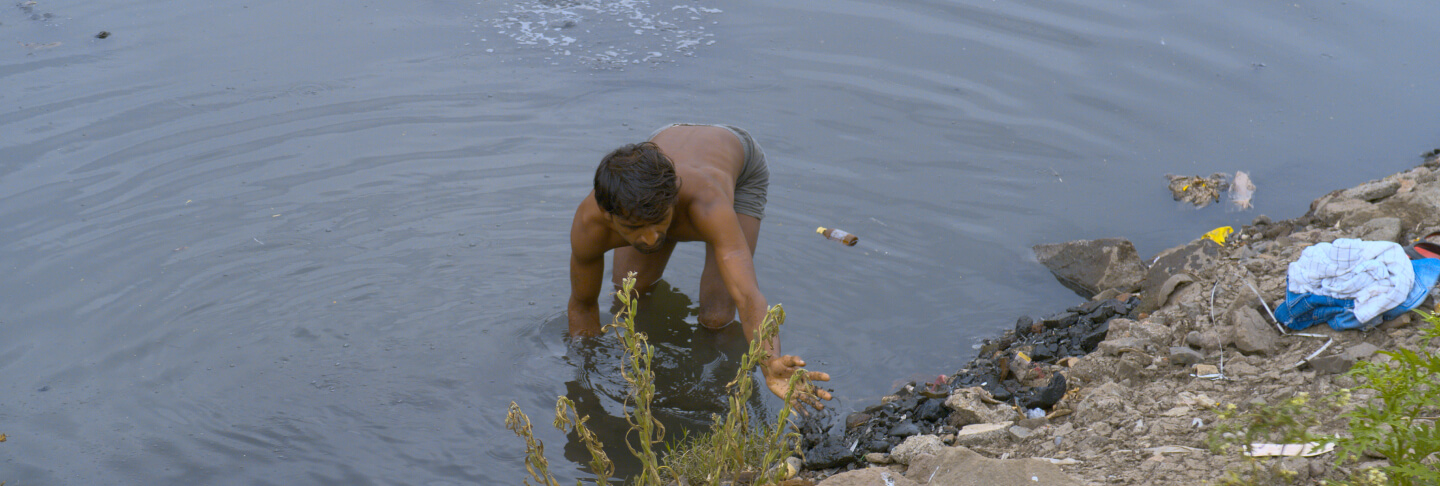The rivers also surprised me entirely when I came across an activity I have never seen before. During the initial days of the Covid-19 lockdown, I saw a group of men entering the river with a small net and I assumed they were fishing. I climbed down the stairs of the bridge to watch. But they were not fishing. They were hauling up sludge and mud from the bottom of the river and putting it in mesh nets.
These are the Worm Collectors of the City, who literally live off a polluted river, at personal peril. Worm Collectors collect Tubifex worms (also called Sludge worms) which inhabit anaerobic sludge made by a combination of solid waste, sewage and silt. These worms are either dried or washed and sold to aquariums. While the men make hardly one day’s wage collecting the worms, dried worms are sold at nearly Rs 4000-5000/ kg by the aquariums.
The fisherfolks
Sinking fishing lines and waiting patiently for a catch. This is only possible when there is some water in the river released from the dams above. Fisherfolk are part-time fishers and consume some fish at home and sell a part of the catch.
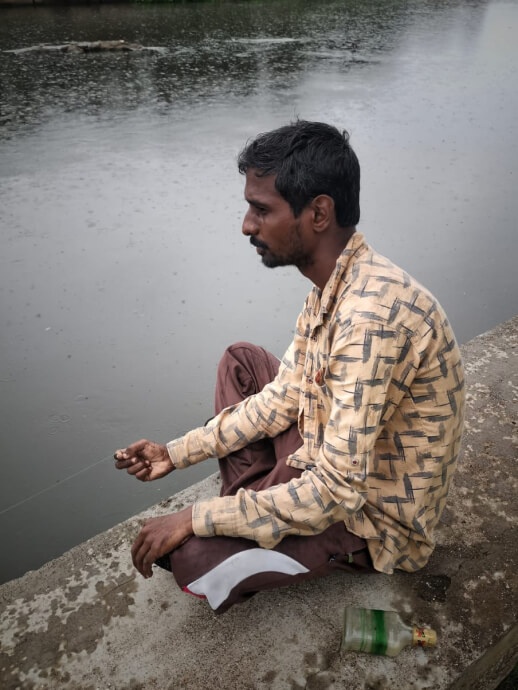
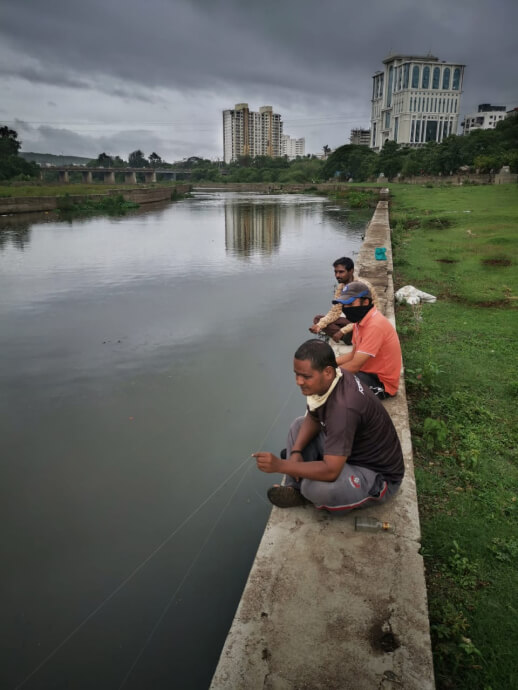
Catch of the day
MaMagur, Clarias batrachus or walking catfish. Known for its ability to survive in turbid waters with low oxygen. The fisherman made a video call to his son who was jumping with joy at seeing his father’s catch.
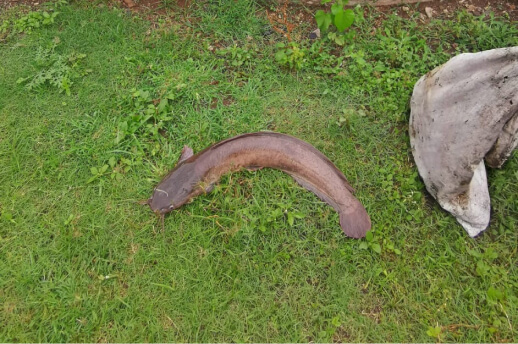
Collecting vegetables
A Grandma and grandson duo collecting Ghol vegetable, Portulaca oleracea, and Brahmi, Bacopa monnier from the riverbank. They sell it in local markets. These are rainy vegetables and this is a seasonal activity. Both herbs have documented medicinal properties.

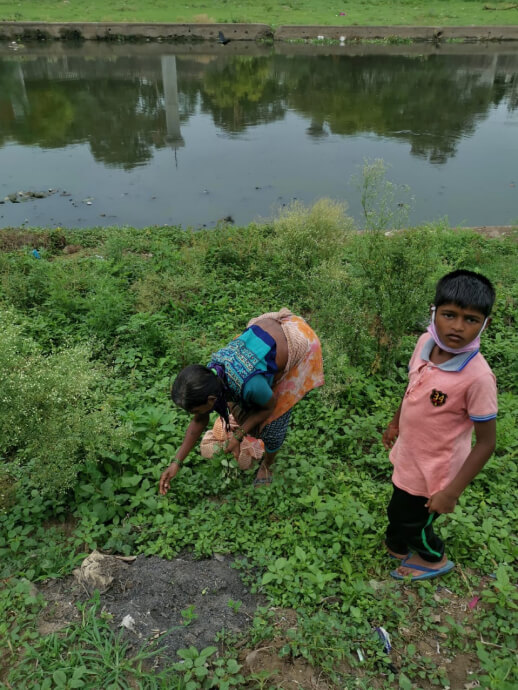
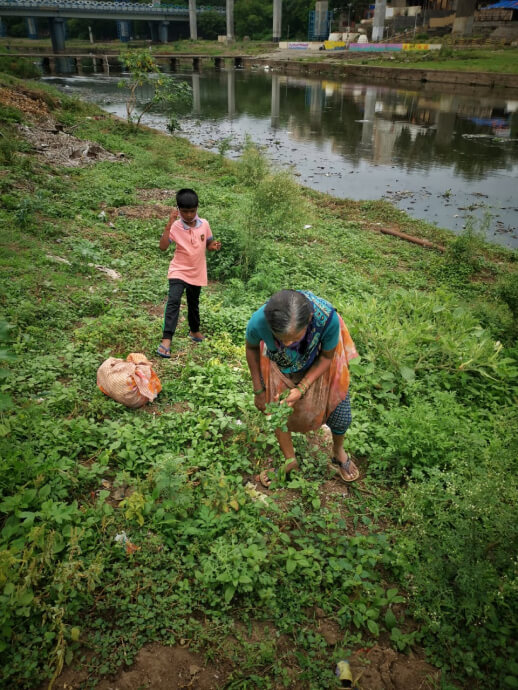
Buffaloes in water
As their name suggests, Domestic Water Buffaloes are water loving animals. The Mutha River acts as their personal pool where they can take a mud bath and water bath. Cattle herders graze the buffaloes in river banks and let them soak up in the floodplain pools for a while. In the absence of a river or riverbanks, the cattle herders will have nowhere to go with their cattle.
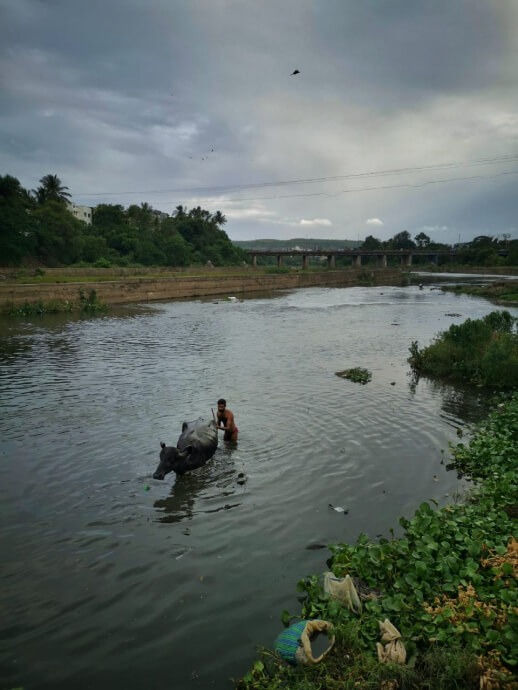

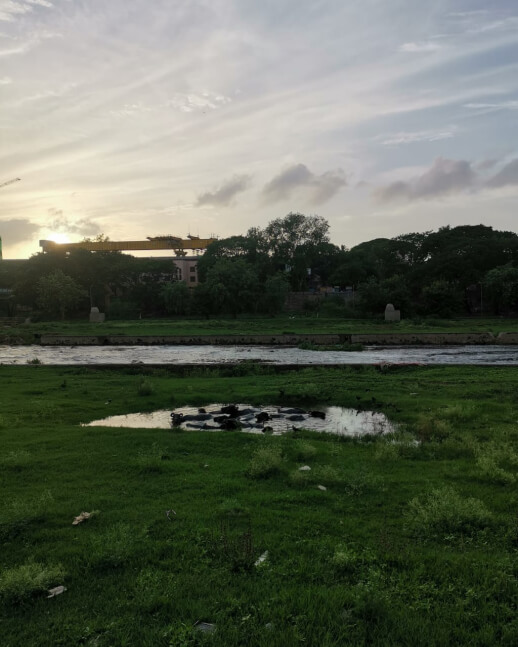
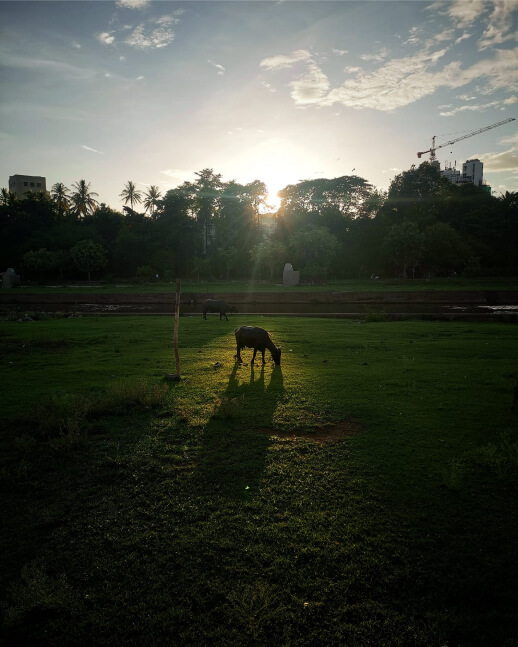
Baby showers on the banks of Mutha!
It was affirming to see a young couple having their baby shower photoshoot on the banks of the Mutha. In the rains, the riverbed and banks are transformed into a green wonderland and provide opportunities to budding photographers too!
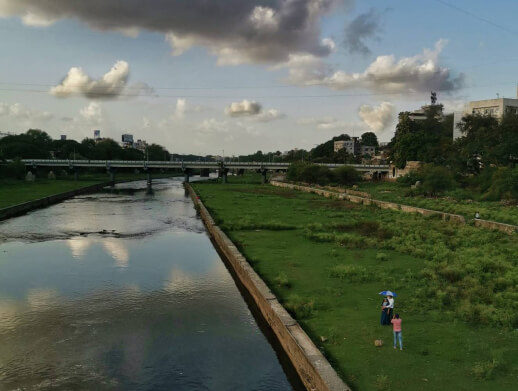
Worm collectors
They enter the river in the most polluted stretch with nets and plastic bags, venturing inside the river, sieving mud from the bottom of the riverbed, hauling the mud onto a dirt island to finally catch a hoard of tubifex worms.
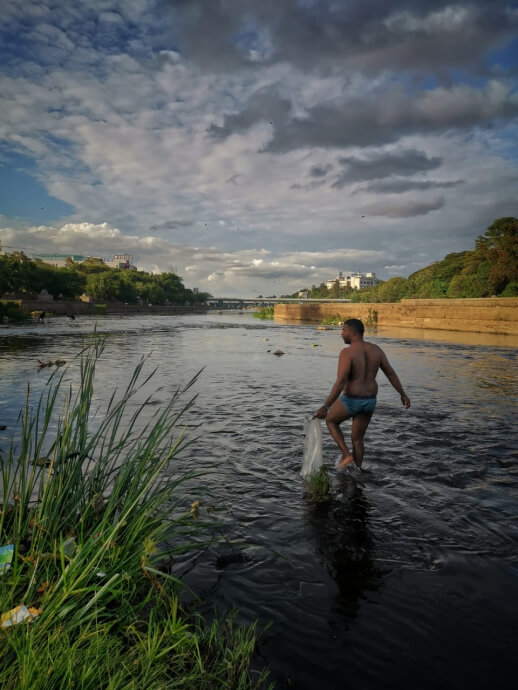
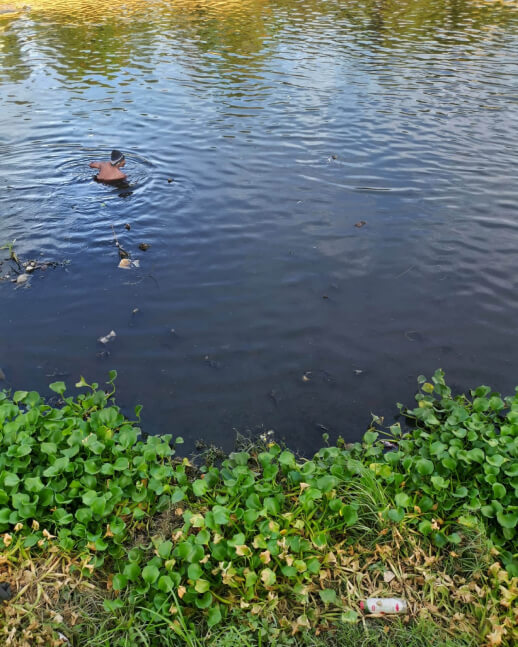
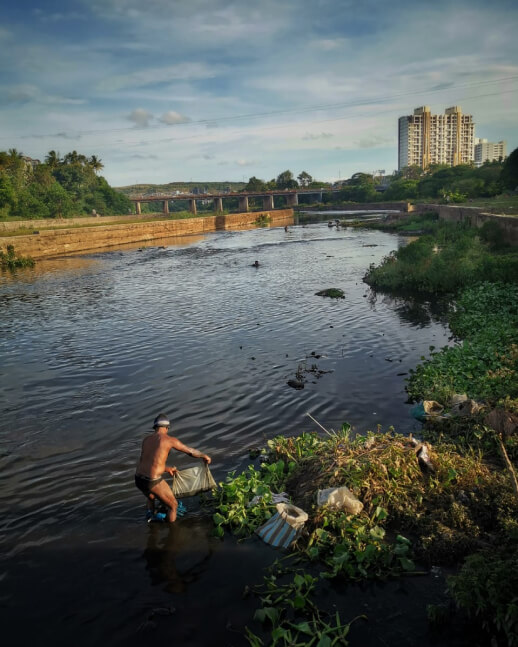
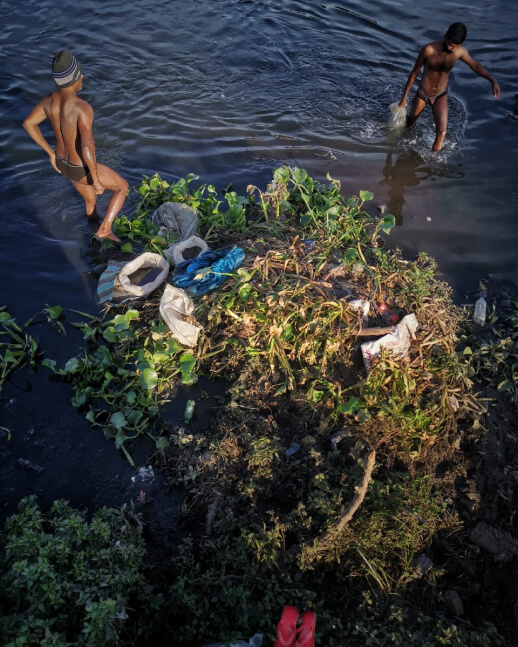
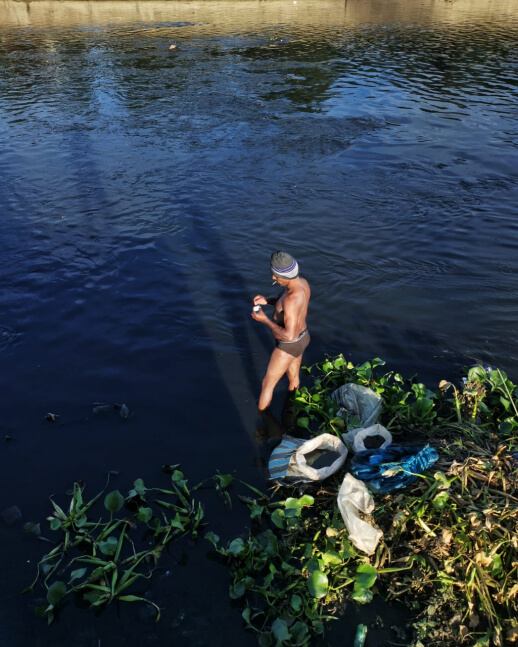
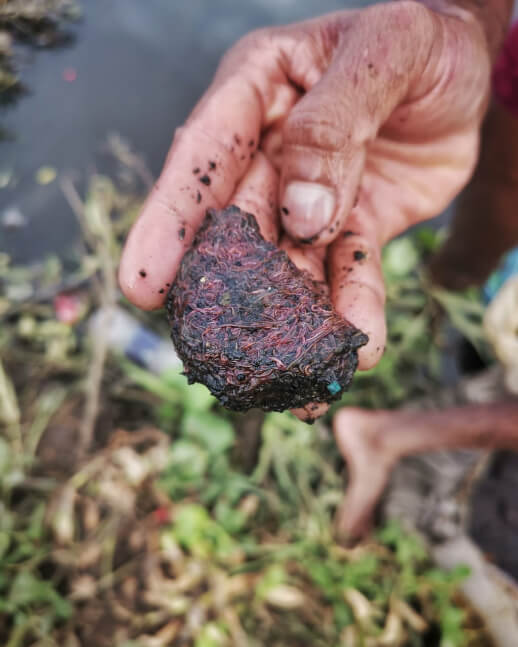
Hoard of tubifex worms ready to go to the middleman and aquariums to make a pretty sight in homes far removed from the river.
